Encircling Eternity, Panchkoshi Yatra is the Soul’s Journey with Mahadev
Varanasi, also known as Kashi, is not just a city—it is the eternal abode of Lord Shiva. In fact, it is designed as a cosmic mandala, a living symbol of spirituality and sacred geometry. Over time, many people have forgotten this deeper truth. As a result, several ancient sacred spots have sadly faded or changed, including sites along the Panchkoshi Yatra, Kashi’s sacred pilgrimage route.
At the very heart of this geometry lies Madhyameshwara Mahadev, revered as the “Lord of the Centre.” In earlier times, this sacred shrine stood on the banks of the Mandakini Tirtha. Today, however, the original water body has disappeared. Nevertheless, locals still identify the pond in Maidagin’s Company Garden as a reflection of that holy site. Therefore, they continue to honor it as part of Kashi’s living heritage.
From Sacred Kunds to Cosmic Circles
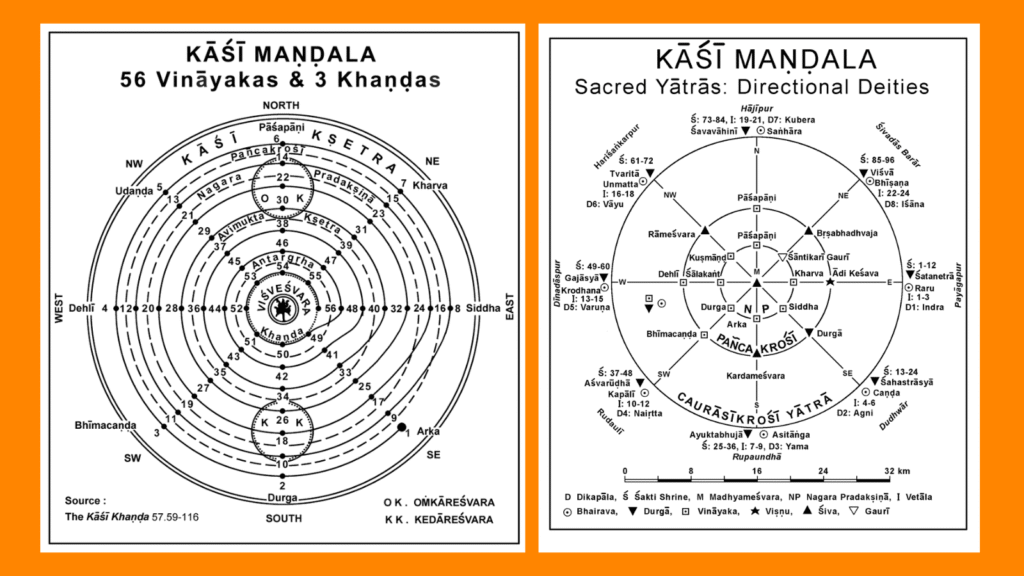
From Madhyameshwara, five concentric spiritual circles gradually spread outwards, dividing Kashi into sacred layers. Moreover, each circle represents one of Lord Shiva’s divine aspects. This makes the city not just a geographical space but a cosmic design.
- Vamadeva – the nurturing power
- Sadyojata – the creative energy
- Aghora – the transformative force
- Tatpurusha – the guiding consciousness
- Ishana – the supreme transcendent form
These circles not only symbolize the five elements but also represent the five eternal powers of Shiva. Over the centuries, they gradually became the foundation of Kashi’s five great pilgrimage routes. Thus, the spiritual geometry of the city directly shaped the sacred journeys that devotees still follow today.
- Chaurasikroshi Yatra – the largest circuit, often called the “Greater Panchkroshi”
- Panchkoshi Yatra – the most famous and widely practiced sacred walk
- Nagar Pradakshina – a circle around the outer city
- Avimukta Yatra – the innermost circle, where Shiva is believed to be ever-present
- Antargriha Yatra – the sacred path around the very core of Kashi
Together, therefore, these sacred paths form the cosmological design of Kashi. Here, geography, faith, and divine symbolism unite. In this way, the city reveals itself as a truly eternal abode of Lord Shiva.
Among its many spiritual traditions, therefore, one of the most sacred and ancient pilgrimages is the Panchkoshi Yatra. Indeed, this journey is not just about walking a route. Rather, it focuses on purifying the mind, body, and soul. At the same time, pilgrims experience the living essence of Shiva.
What is the Panchkoshi Yatra?
Have you ever noticed marble plates outside temples in Varanasi, each marked with a number? In fact, these plates are not random. They belong to the ancient Panchkroshi Yatra, a sacred pilgrimage route encircling the city. For centuries, therefore, devotees of Lord Shiva have followed this path. They move step by step through villages, temples, and shrines that together form a divine circle around Kashi.
The Yatra is not just about covering 88 kilometers; rather, it is about stepping into a living mandala, where every halt, every prayer, and every breath together carry deep spiritual significance. In this way, pilgrims experience the sacred geometry of Kashi with their body, mind, and soul fully engaged.
The Meaning of Panchkroshi
The word Panchkroshi comes from two Sanskrit words:
Panch = Five
Krosha = An ancient measure of distance
Distance between Padav (Halts)
Manikarnika to Kardmeshwara – 3 Kos
Kardmeshwar to Bhim Chandi – 5 Kos
Bhimchandi to Rameshwar – 7 Kos
Rameshwar to Shivpur – 4 Kos
Shivpur to Kapildhara – 3 Kos
Kapildhara to Manikarnika – 3 Kos ( Making the total journey of 25 Kos)
*1 Kos = 3.2 Km
Thus, Panchkoshi refers to a journey of five krosha, which, in fact, forms a sacred circuit of about 88 km around Varanasi. Moreover, this circle is believed to mark the cosmic boundary of Kashi, whereby time, death, and rebirth dissolve at Shiva’s feet.
The Sacred Five-Day Journey
Manikarnika Kund – The Eternal Starting Point of the Panchkoshi Yatra

The Panchkoshi Yatra begins and ends at Manikarnika Kund, one of Kashi’s most revered and ancient water bodies. Situated near the famous Manikarnika Ghat, this kund is considered the very navel of Kashi, where cosmic energy flows eternally. Pilgrims first take a dip or offer prayers before starting the journey. Then, upon returning, they complete the sacred circle by ending their Yatra at this spot, honoring Kashi’s sanctity and Shiva’s eternal presence.
Traditionally, the Panchkoshi Yatra takes five days on foot. During this time, pilgrims padav (halt) at five sacred stations. In this way, each day’s halt becomes a chapter in the pilgrim’s inner journey. As they progress, they move from body to soul and from ego to surrender. Therefore, every stage of the Yatra guides devotees closer to spiritual awakening and connection with Lord Shiva.
Kardmeshwar Mahadev 1st Padav (Halt)
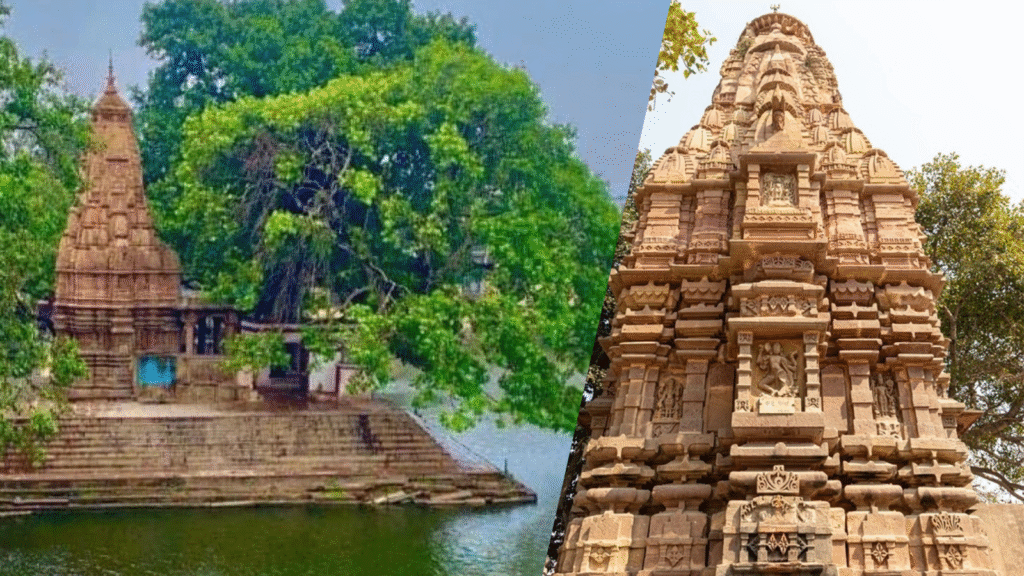
After offering prayers, pilgrims then proceed to Kardmeshwar Mahadev, the first main stop. Located in the northern part of Varanasi near the Varuna River, this temple is also regarded as the gateway guardian of Kashi. Therefore, it is believed to protect the city and its pilgrims from negative forces, ensuring a safe and spiritually enriching journey ahead.
According to legend, when Lord Vishnu created Kashi, he appointed different deities as protectors at the city’s boundaries. Among them, Kardmeshwar Mahadev became the chief guardian of the northern boundary. Therefore, pilgrims offer their first prayers here before continuing the sacred circuit. In doing so, they seek protection and blessings for the journey ahead.
Spiritual Significance
- Kardmeshwar Mahadev is regarded as the one who removes obstacles at the very start of the Yatra.
- Devotees believe that worshipping Kardmeshwar is essential for the Panchkoshi Yatra to remain complete.
- Local traditions describe him as a protector of dharma. He ensures the safety and blessings of every pilgrim who enters Kashi’s cosmic circle.
Bhimchandi Devi 2nd Padav (Halt)
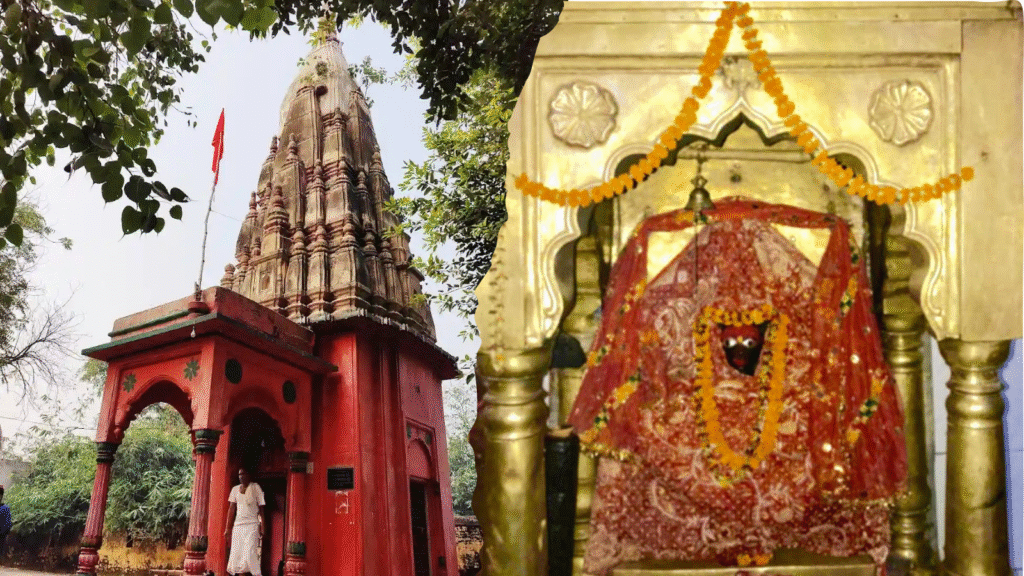
The second halt of the Panchkoshi Yatra is at the temple of Bhimchandi Devi, located in the eastern part of Kashi. Here, Goddess Shakti is worshipped as the protector of the Yatra. Moreover, her presence is said to destroy obstacles and, at the same time, fill the pilgrim with courage and discipline.
According to tradition, just as Lord Shiva protects the soul, so too does the Goddess Bhimchandi protect the land of Kashi. Therefore, pilgrims believe that by worshipping her, obstacles in life are destroyed. Moreover, the journey ahead becomes smooth and blessed, bringing courage and divine guidance to every devotee.
Spiritual Significance
- Worshipping Bhimchandi Devi symbolizes inner courage. It helps devotees fight the battles of the mind, such as fear, ego, and doubt.
- She is seen as the guardian goddess of the Panchkoshi Yatra. She grants pilgrims the strength, discipline, and determination they need to continue.
Rameshwar Mahadev 3rd Padav (Halt)
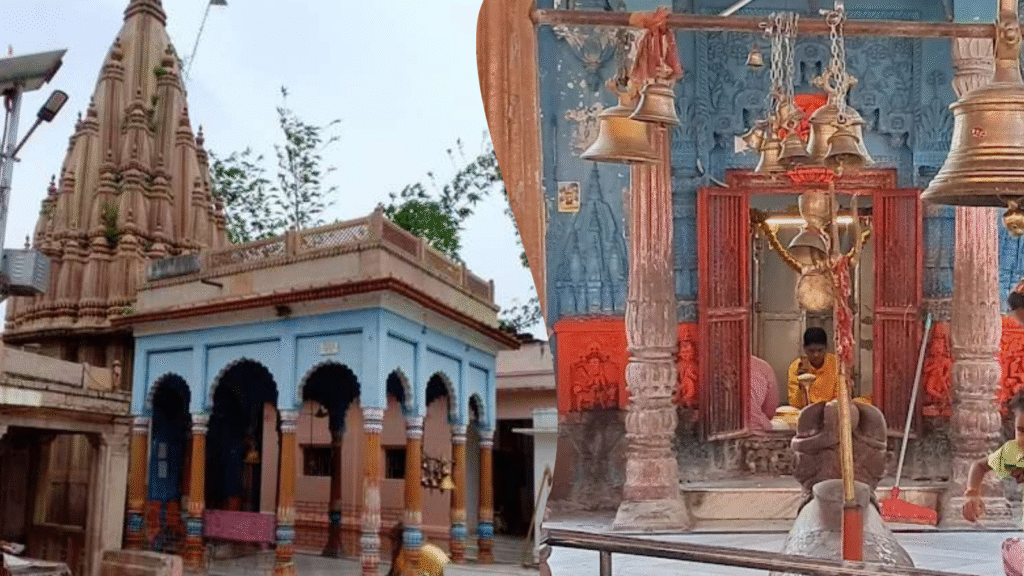
The third padav of the Panchkoshi Yatra is at Rameshwar Mahadev, one of the most revered Shiva shrines in Kashi. This temple has a unique connection to Lord Rama, making it significant for both Shaivites and Vaishnavites. According to legend, Lord Rama installed the Shiva Linga of Rameshwar Mahadev here on his way back from Lanka after defeating Ravana. Devotees believe that offering prayers here gives the same spiritual merit as visiting Rameshwaram in South India. At Rameshwar, Rama’s devotion beautifully merges with Shiva’s eternal blessings.
Spiritual Significance
- This padav symbolizes the inner cleansing of the soul. Just as Lord Rama sought forgiveness and renewal, pilgrims, too, surrender their karmas here.
- Devotees believe that by worshipping Rameshwar Mahadev, one receives the strength to shed pride, ego, and past sins, making the heart pure for higher spiritual realization.
- The temple marks a turning point in the Yatra—from discipline and courage (Bhimchandi Devi) towards deep penance and surrender.
Shivpur 4th Padav (Halt)
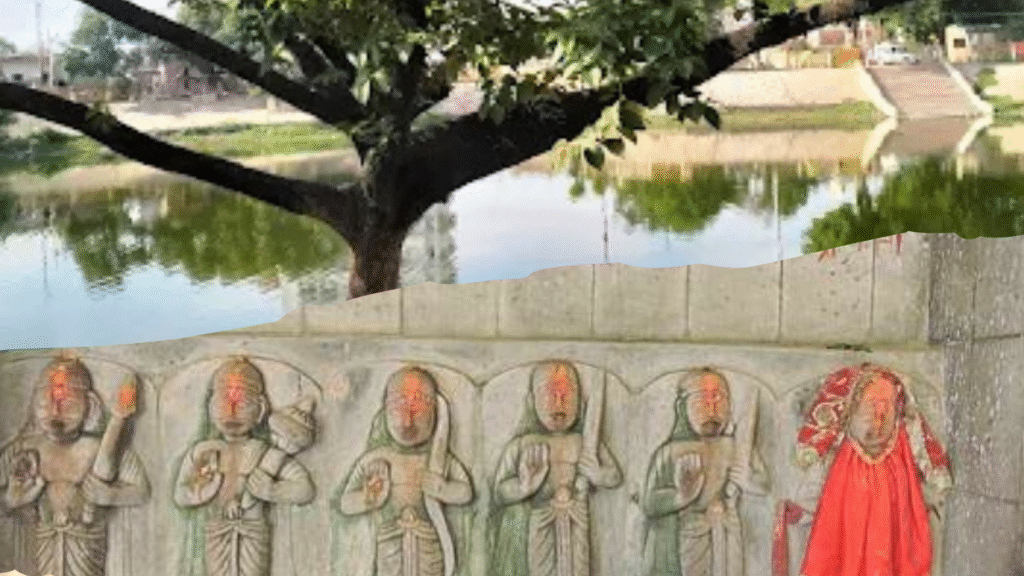
Shivpur is not just a halt in the Panchkoshi Yatra—it is revered as the resting place of Lord Shiva. Pilgrims believe that here, Shiva pauses from his cosmic dance and rests, blessing the land with tranquility and balance. This makes Shivpur a place of stillness within movement. It symbolizes that even amidst life’s journey, one must pause, reflect, and surrender.
The Panch Pandav Lingas represent devotion, strength, and unity. They teach that spiritual progress is not a solitary path but one walked with humility, family, and faith. Just as the Pandavas bowed before Shiva in their trials, pilgrims at Shivpur are reminded to lay down their burdens. In doing so, they surrender to divine will.
Draupadi Kund, with its pure waters, is seen as a symbol of nourishment and grace. Bathing or offering prayers here is believed to cleanse the soul and bring harmony in family life.
Spiritual Significance
- Resting Place of Shiva – Shivpur is believed to be the divine resting place of Lord Shiva, filling the site with calmness and sacred balance.
- Panch Pandav Lingas – The five lingas symbolize unity, strength, and humility, reminding devotees to surrender before Mahadev just as the Pandavas once did.
- Balance of Dharma and Moksha – This halt teaches pilgrims that true liberation is found by fulfilling one’s worldly duties while staying rooted in devotion.
- Draupadi Kund – The sacred pond represents nourishment, purity, and protection of family life. Prayers here are believed to bring harmony and blessings to households.
- Pause Within the Journey – Just as Lord Shiva rests here, pilgrims too pause at Shivpur to reflect, regain strength, and continue their path with renewed faith.
Kapildhara Mahadev 5th Padav (Halt)
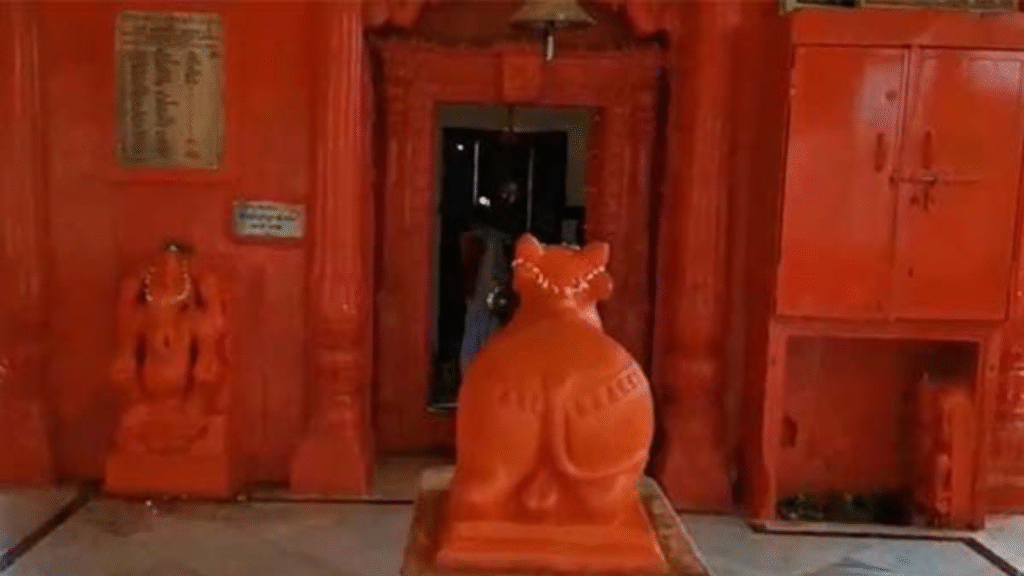
The fifth and final padav of the Panchkoshi Yatra is at Kapildhara Mahadev. It is a serene and spiritually powerful place associated with Sage Kapila, one of Hinduism’s greatest rishis. The name Kapildhara translates to “the stream (dhara) of Kapila.” It is believed that the sage performed deep penance and meditation here for years, seeking union with the Supreme.
According to legend, Lord Shiva was so pleased with Kapila’s devotion that He manifested here as Kapildhara Mahadev. The vibrations of Kapila’s meditation still linger in the air. As a result, this place is especially powerful for seekers of truth, meditation, and inner silence.
Spiritual Significance
- Seat of Meditation – Symbolizes the stillness of mind and the depth of wisdom gained through penance.
- Blessings of Knowledge – Pilgrims believe that prayers here open the path of understanding and dissolve ignorance.
- Completion of the Circle –Ending the Yatra at Kapildhara before returning to Manikarnika signifies the closing of life’s cycle. It also represents stepping closer to moksha.
- Inner Silence – The calmness of this place represents the final stage of the Yatra. Here, pilgrims merge into silence and eternity, resting at Shiva’s feet.
- Union of Shiva & Knowledge – Kapildhara unites the wisdom of Sage Kapila with the divine grace of Lord Shiva. It offers spiritual completion to the pilgrim.
End of the Panchkoshi Yatra
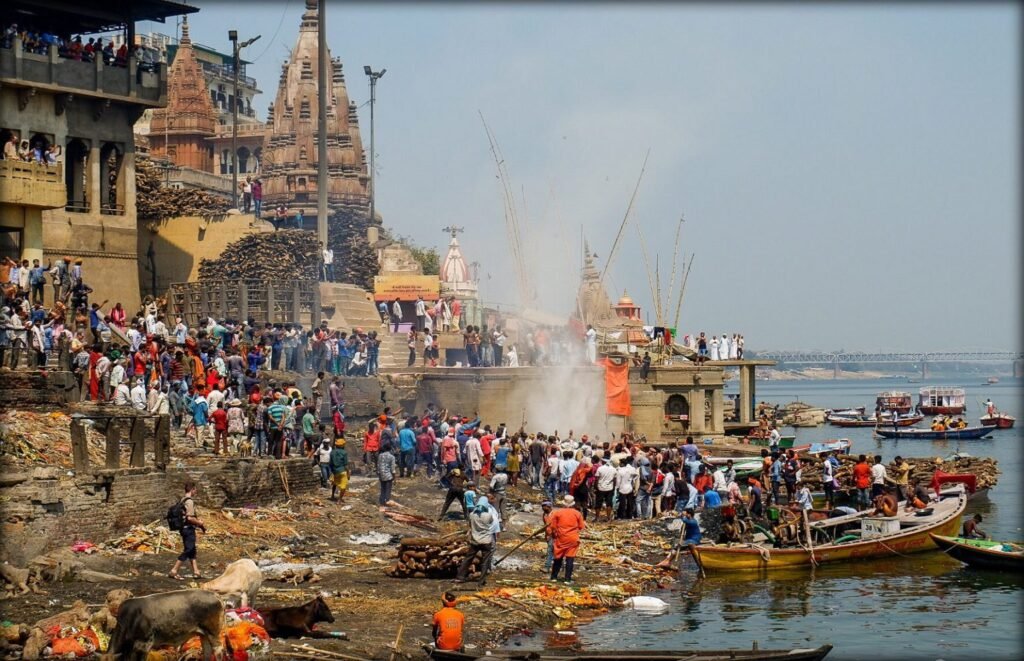
After worship, the circle closes as pilgrims return to Manikarnika Kund, completing the sacred boundary of Shiva’s city. Manikarnika Ghat is one of the holiest places on earth. Here, the boundary of life and death dissolves in Shiva’s presence. Starting and ending the Yatra at this spot represents the eternal cycle of the soul—from birth to liberation. Without Manikarnika, the Panchkoshi Yatra is incomplete. It is here that the pilgrim first surrenders and finally merges with the eternal.
How the Panchkoshi Yatra is Done
Traditionally, the Yatra is done on foot, over five days, with each day covering around 16 km. Devotees walk barefoot, chant mantras, rest in dharamshalas or temples at night, and continue the journey with faith.
Modern pilgrims sometimes complete the Yatra in a single day. However, the true essence lies in walking slowly. In doing so, they absorb the divine energy of every temple and meditate upon Shiva.
The Spiritual Essence of the Panchkoshi Yatra
108 Shrines and Temples – The route includes visits to 108 sacred spots. The number 108 holds deep spiritual significance in Hindu tradition, symbolizing wholeness and cosmic connection.
Walking as Meditation – Each step is a mantra, each mile a prayer. The rhythm of walking slowly transforms into inner silence.
Circle of Liberation – Just as the Yatra encircles Varanasi, it symbolizes the cycle of life and death. Completing the circle represents breaking free from worldly attachments and stepping closer to moksha (liberation).
A Journey That Transforms
The Panchkroshi Yatra is more than a journey around Varanasi—it is a journey into the soul. Every padav is a reminder, every temple a mirror, and every step a surrender to Lord Shiva.
To walk the Panchkroshi Yatra is to feel Kashi not as a city, but as a living presence. By the end of the five days, pilgrims return to where they began—but inwardly, they are transformed forever.
Walk with Us on the Sacred Path
At Dhyanam India Tours, we believe that travel is not just about places—instead, it awakens the spirit. Moreover, our specially curated spiritual journeys in Varanasi include the Panchkroshi Yatra, one of the city’s most sacred pilgrimages. Through these journeys, seekers experience the true essence of Kashi. With deep knowledge of traditions, personalized guidance, and soulful storytelling, we guide you through each sacred halt. In doing so, we help you connect with the living energy of Shiva at every step.
Whether you wish to undertake the full five-day Yatra or a guided day circuit, Dhyanam India Tours is here to plan your journey. Alternatively, you can combine it with other sacred experiences in Kashi. We organize everything with devotion and care.
Come, walk with Mahadev. Let Kashi transform not just your journey, but your soul.
